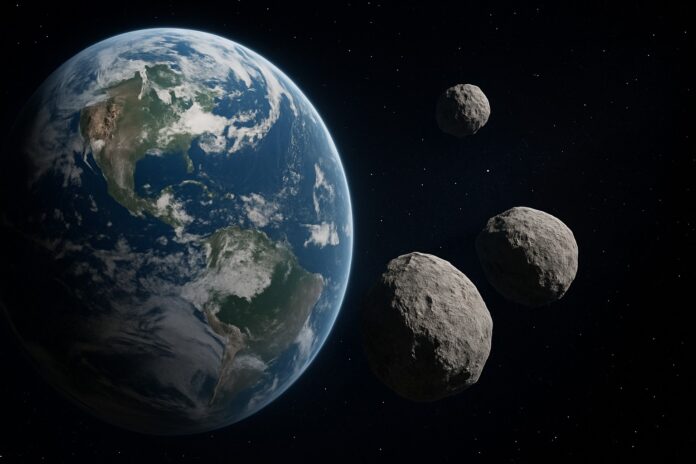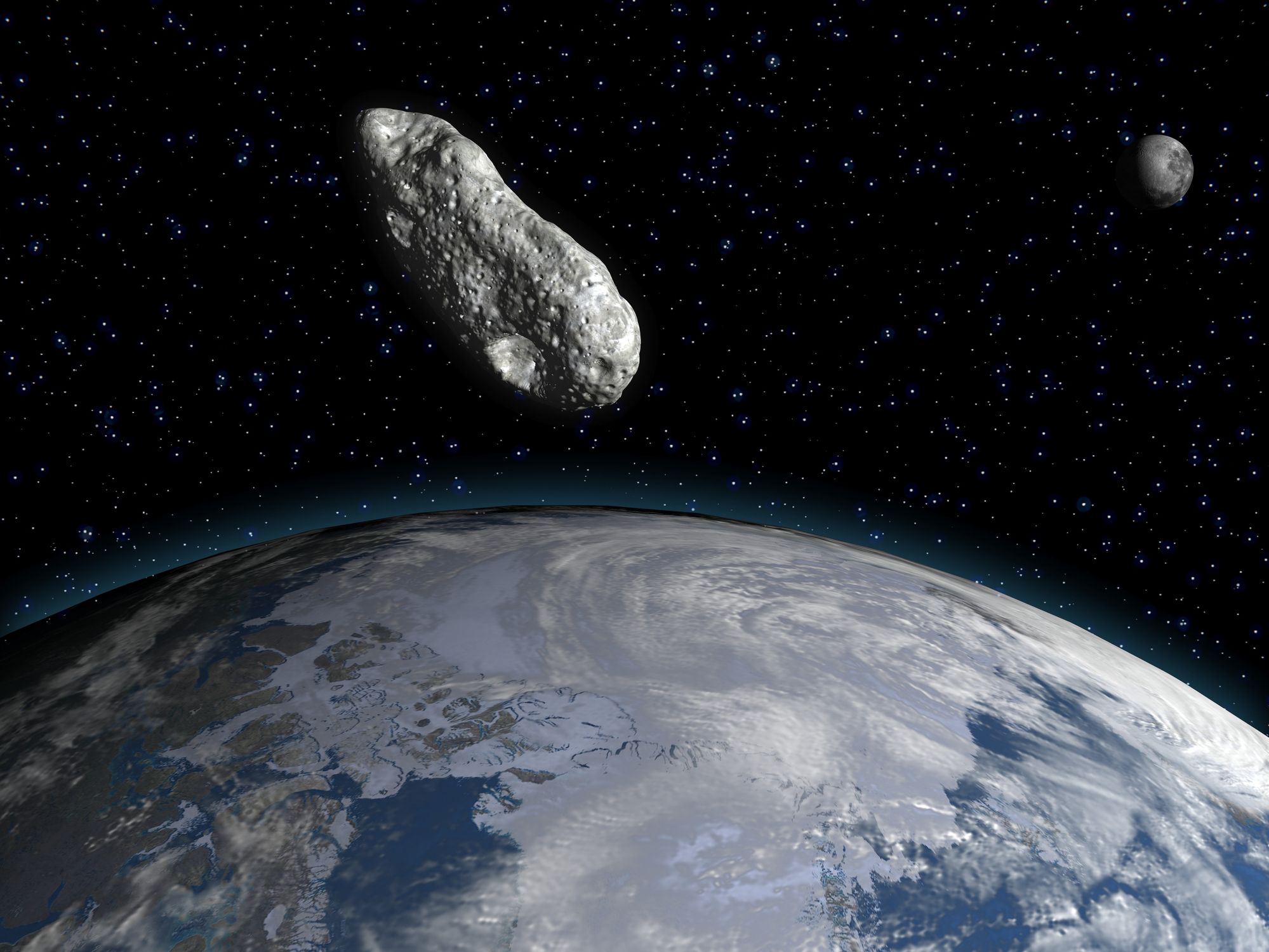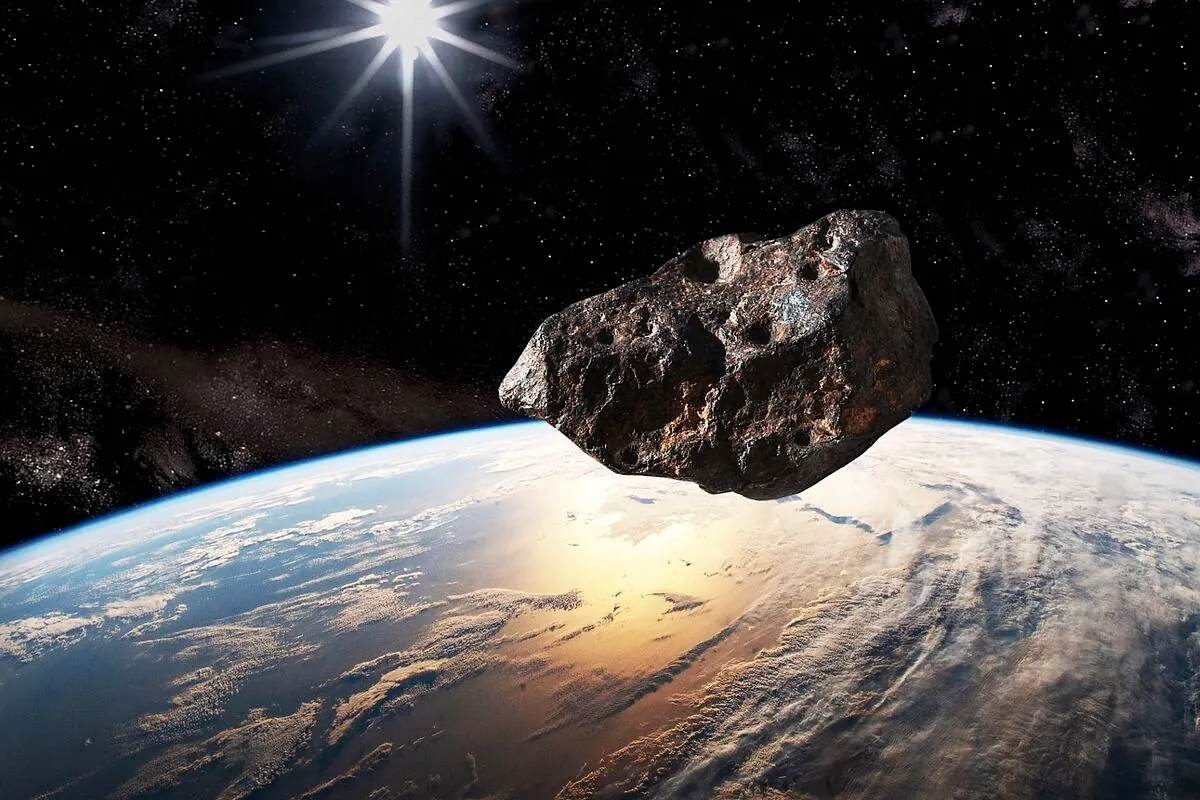
Most people grow up thinking Earth has one moon. The big bright one in the sky that shapes our tides, lights up our nights, and fills up our calendars. But that story leaves out something wild. Earth sometimes has company-small, temporary moons that drift into our orbit, stay a little while, then leave without much notice.
They are called minimoons, and they are real. They are not myths, not science fiction, and definitely not space junk. These are actual objects, mostly small asteroids, that Earth catches in its gravitational pull for a few months at a time.
So far, scientists have confirmed four of them. Just four have made the official list. But researchers believe there are likely dozens more that have slipped in and out of orbit without ever being seen.
These temporary moons do not last long. They are fast, dim, and incredibly hard to track. But each one that does get captured gives scientists a rare opportunity to study how our planet interacts with near-Earth objects. Some of these even appear to be fragments of our own Moon, flung into space long ago.
Let’s meet the four minimoons Earth has welcomed so far.
1. 2006 RH120 – The First Confirmed Minimoon

Back in 2006, something small and fast entered Earth’s orbit without anyone noticing at first. Once detected, it became clear that Earth had temporarily captured a natural object-something no scientist had ever officially tracked before.
That object, named 2006 RH120, stayed with Earth for nearly a year before gravity pushed it back into space. It became the first officially confirmed minimoon and reshaped how scientists think about Earth’s ability to capture stray space rocks.
| Discovery Date | September 14, 2006 |
| Estimated Size | 2 to 3 meters |
| Time in Orbit | About 11 months |
| Orbits Completed | 4 |
| Escape Date | June 2007 |
| Return Predicted | Possibly around 2028 |
2006 RH120 was not just a lucky catch. It proved Earth can grab and hold small objects naturally. That opened the door to years of follow-up studies on how common these temporary moons might be.
2. 2020 CD3 – The Car-Sized Drifter
Most minimoons are hard to spot. They are small, fast, and dim. But 2020 CD3 stood out. Spotted in February 2020 by astronomers at the Catalina Sky Survey, it had actually been orbiting Earth since 2018. That means it went unnoticed for nearly two years.
Unlike 2006 RH120, 2020 CD3 had a far more chaotic path, pulled not only by Earth but also by the Moon. Its orbit twisted and shifted constantly, making it difficult to predict.
| Discovery Date | February 15, 2020 |
| Estimated Size | 1.9 to 3.5 meters |
| Time in Orbit | About 1.5 years |
| Escape Date | May 2020 |
| Orbit Type | Chaotic, influenced by Moon |
| Return Predicted | No confirmed future pass |
2020 CD3 was the second-ever confirmed natural minimoon. It helped validate the theory that Earth could trap these objects regularly-and it caught international media attention in the process.
3. 2022 NX1 – The One That Came Back

When scientists noticed 2022 NX1, some suspected it had been here before. In fact, orbital models suggest Earth may have already temporarily captured this object back in 1981. That makes it the first minimoon to potentially make a return visit.
2022 NX1 belongs to a rare class of near-Earth asteroids called Arjuna-type, which have orbits very close to Earth’s own. That makes them more likely to become minimoons.
| Discovery Date | July 2, 2022 |
| Estimated Size | Around 10 meters |
| First Capture | Possibly 1981 |
| Second Capture | 2022 |
| Return Predicted | Near Earth in 2051 |
| Object Type | Arjuna-class asteroid |
The idea of a returning minimoon adds a whole new dimension to the study of temporary satellites. These objects might not be one-time visitors after all.
4. 2024 PT5 – The Lunar Fragment?
On September 29, 2024, Earth caught another temporary guest.
This one-2024 PT5-stayed in orbit until late November, and it brought something new to the story: possible lunar origin.
Researchers now believe this object may be a fragment of the Moon, likely ejected during an ancient impact.
Its composition appears to match lunar rocks collected during the Apollo missions.
| Discovery Date | September 29, 2024 |
| Estimated Size | Around 10 meters |
| Time in Orbit | About 2 months |
| Escape Date | November 25, 2024 |
| Possible Origin | Lunar surface (fragment) |
| Return Predicted | 2055 |
If confirmed, 2024 PT5 would be the second minimoon ever linked to lunar debris after Kamoʻoalewa in 2021.
Its discovery suggests Earth’s Moon could be shedding pieces that continue to orbit our planet.
Final Thoughts
Minimoons remind us that Earth’s orbit is not as quiet or predictable as it seems.
Each one, no matter how small or brief its visit, carries evidence of larger forces at work- ancient collisions, gravitational shifts, and cosmic patterns still unfolding.
Read Next – What Will Happen to Earth in 2025
















